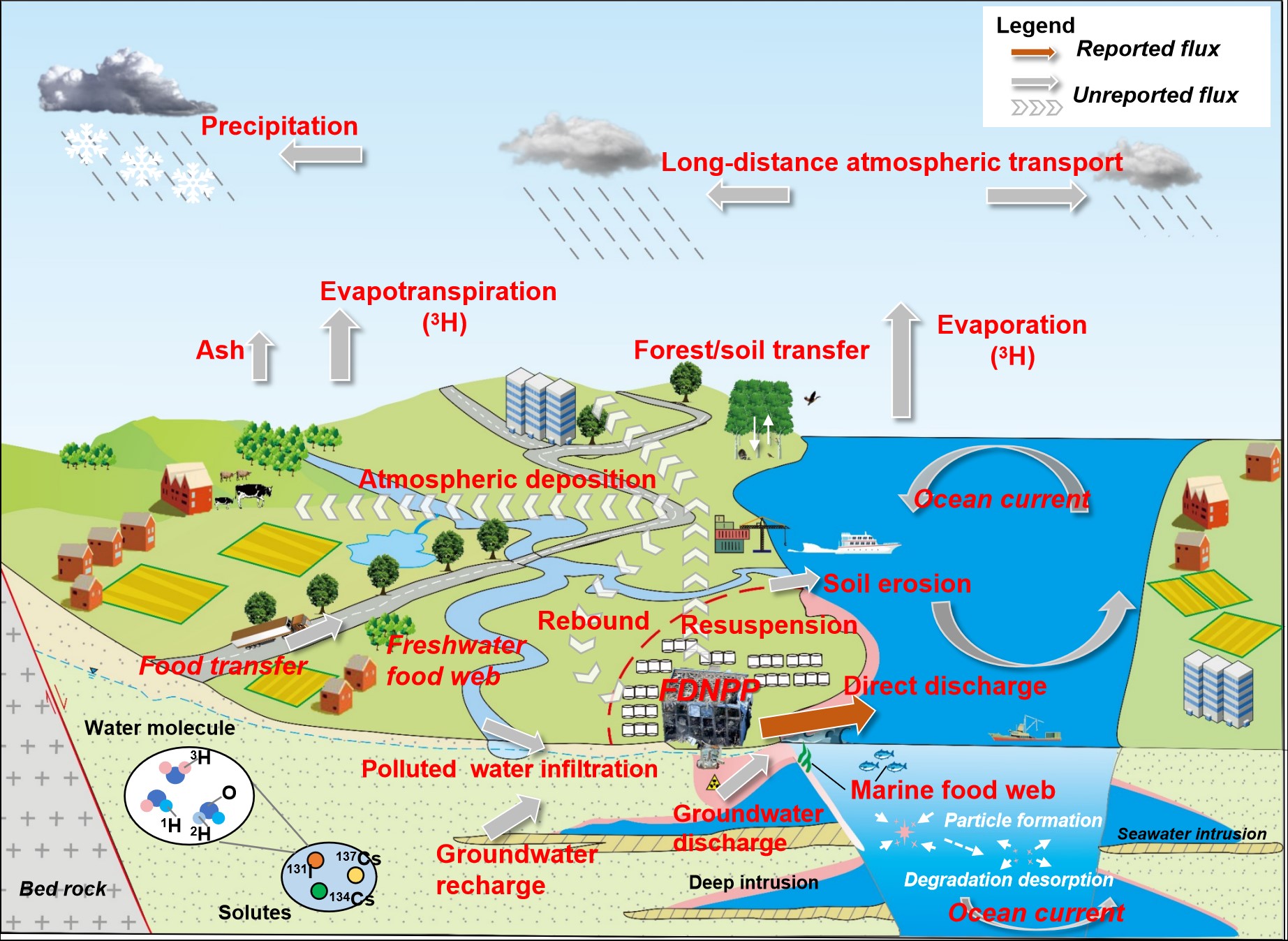Chinese Scientists Call for Long-term Monitoring of the Ecological Impacts of Releasing the Nuclear Wastewater into the Ocean!
Prof. Yonglong Lu, Foreign Member of Academia Europaea (AE), Fellow of the World Academy of Sciences (TWAS), and Editorial Board Member ofGeography and Sustainability, was invited to publish a paper related to the Nuclear Wastewater inGeography and Sustainability.In this paper ofMonitoring Long-term Ecological Impacts from Release of Fukushima Radiation Water into Ocean, which was published on April 27th, 2021, Prof. Yonglong Lu analyzed the ecological impacts caused by the nuclear accident and the potential impacts of releasing the nuclear wastewater into the ocean, and proposed science-based solutions to call foractions from the global science community.
After Japan decided to release the nuclear wastewater into the Pacific Ocean, there is not much reaction from the global science community, as it is an emerging area that needs an in-depth multi-disciplinary and interdisciplinary research. This short manuscript calls for actions from the global science community to respond to such an unscientific behavior.
Fukushima Nuclear Accident was the worst emergency at a nuclear power plant since the Chernobyl disaster in 1986. The release of radioactive materials which mainly consist of3H,14C,134Cs and so on after the accident has caused radionuclide pollution at a large scale to the atmosphere, hydrosphere, biosphere, and pedosphere both around the Fukushima Daiichi Nuclear Power Plant (FDNPP) and the entire northern hemisphere. The half-life of radionuclides inthe nuclear wastewater ranges from 1.01 to 16000000 years. In addition, radionuclides with longer half-life will exist in the ecosystem for a long time.

Transportation pathways of radionuclides in the ecosystem
Most of the radionuclides have higher biological concentration factor and seafloor sediment-water distribution coefficient, which indicates an accumulation along the trophic level in food web and an easierabsorption by seabed sediments.
The radionuclides have been found on the surface of vegetables, fruits, crops, andanimal feed through atmospheric wet/dry deposition or precipitation. Humans were affected by direct external exposure and internal exposure via the inhalation and ingestion of radionuclides from contaminated food.
According to the data from theTokyo Electric Power Co.and Ministry of Health, Labor and Welfare, Japan, the radioactive concentration of seawater has decreased rapidly due to the diffusion of seawater after the Fukushima Nuclear Accident, however, radioactive concentration of marine fish in Fukushima Prefecture has decreased relatively slowly, and the longer the half-life of the substance, the slower the degradation.
Therefore, they emphasized that the continuous discharge of large amounts of nuclear wastewater that do not meet emission standards to the oceanswithout strictenvironmental assessment, will have irreversible effects on global marine ecosystems.
Science-Based Solutions
The paper concluded that science-based solutions should be sought by the government andthe global science communitytaking into accounts the long-term and global influence of Fukushima Nuclear Accident.
First of all, a third-party evaluation and strict environmental assessment is required before any action. New regulations are needed to determine the standards for the discharge of radioactive materials into the ocean. All the potential pollutants in the sea water, seabed and marine organisms should be tracked.
Second, multi-stakeholder public participation is imperative for monitoring the impacts. The Japanese government should invite the participation of multiple stakeholders, including academia, industry, general public and NGOs from the neighboring countries, for anin-depth assessment and monitoring of the potential impacts of Fukushima nuclear wastewater, and conduct accurate, open and transparent information disclosure. In addition to the continuous disclosure of data, marine and seafood testing should also involve the public participation in order to build the people's confidence.
Third, long-term integrated monitoring of coastal waters should be conducted with close international collaborative research. Along-term collaborative research program should be launched to investigating the transfer of the radioactive pollutants among multiple media, and analyzing their impacts on ecosystems and human health.
Last but not least, a compensation mechanism for potential victims must be set up. An international compensation mechanism should be set up to cover expenses for the affected countries to clean up the ocean pollution and for the victims to recover from health damages.
Xiamen University, Research Center for Eco-Environmental Sciences, Chinese Academy ofSciences, University of Chinese Academy of Sciences, and Sino-Danish Center for Educationand Research made great contributions to the manuscript-writing.
About the Author

Dr. Yonglong Lu is a Chair Professor of Xiamen University and a Distinguished Professor of Research Center for Eco-Environmental Sciences (RCEES), Chinese Academy of Sciences (CAS).
He is a Foreign Member of Academia Europaea (AE) and a Fellow of the World Academy of Sciences (TWAS).
His research focuses on sustainability ecology, regional ecological risk assessment and environmental management.
Homepage:https://orcid.org/0000-0002-3338-4210The pdf version of the paper is located at:https://doi.org/10.1016/j.geosus.2021.04.002。
原载于4月30日Geography and Sustainability编辑部公众号,原文链接:https://mp.weixin.qq.com/s/c_PhKlTmWrNtf-F13R50kw。

